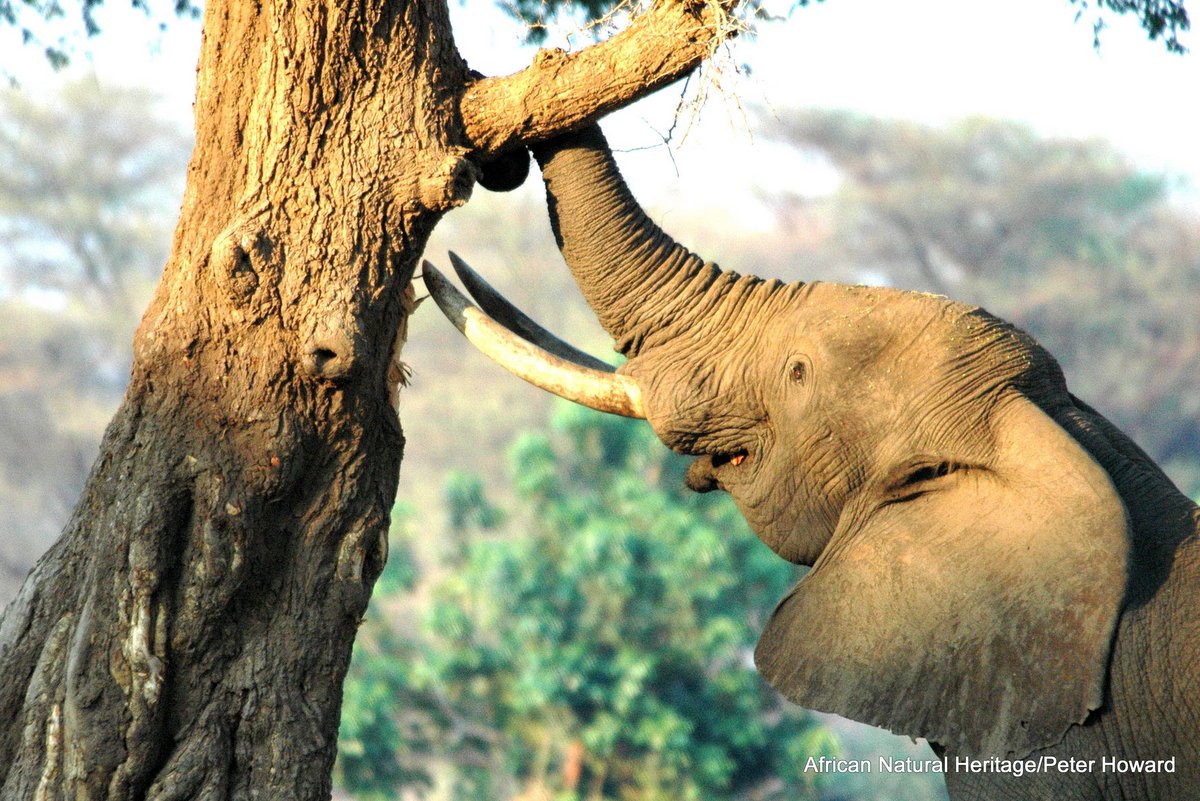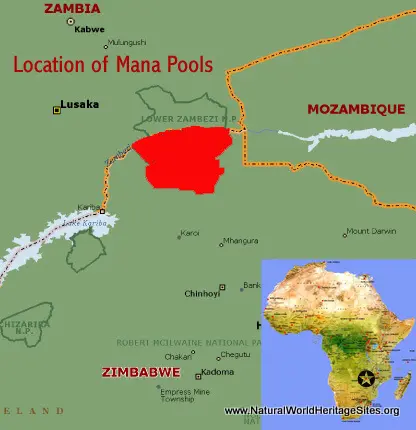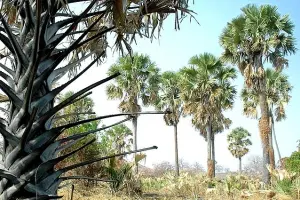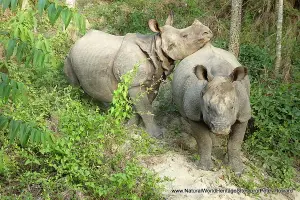EXPLORE ZIMBABWE’S MANA POOLS NATIONAL PARK, SAPI AND CHEWORE SAFARI AREAS with this slideshow, check the location map and get all the facts and information below.
For slideshow description see right or scroll down (mobile). Click to view slideshow
World Heritage Values: Mana Pools National Park, together with Sapi and Chewore Safari Areas is an exceptional example of one of Africa’s typical ecosystems – the miombo woodlands, which cover wide swathes of tropical southern Africa. It encompasses an area stretching from the top of the Zambezi escarpment to the valley floor, protecting the habitat (and seasonal migration routes) of vast herds of large mammals, (particularly elephants) which congregate along the Zambezi during the dry season, dispersing into the woodlands during the rains.
WORLD HERITAGE VALUES: The specific attributes which qualify Mana Pools National Park, Sapi and Chewore Safari Areas for world heritage status can be summarised as follows:
Dramatic Riverine Landscape. The middle stretches of Africa’s fourth largest river, the Zambezi, represent one of the world’s last true wilderness areas, a place of exceptional beauty. The broad valley floor at Mana Pools comprises a 3.5 km-wide expanse of sand-banks, islands and channels, narrowing to 150 m as the Zambezi passes through the dramatic Mupata Gorge. The diversity of vegetation communities, meandering channels, floodplains, old ox-bow lakes (including the four Mana Pools from which the site takes its name) and park-like groves of tall, shady Faidherbia albida (winterthorn) trees create an exceptional riverine wilderness with spectacular expansive views over the length and breadth of the valley. Away from the river, a pristine wilderness of deciduous miombo woodland stretches into the hinterland and up the steep escarpment to the south of the valley.
Spectacular animal congregations. Spectacular dry season congregations of around 20,000 large mammals, notably elephants, buffalo, waterbuck, zebra and sable antelope, in the evergreen gallery forests and riverside communities along the banks of the Zambezi represent an exceptional natural phenomenon dependent on the maintenance of dispersal areas throughout the 6,766 km2 of the world heritage property and beyond.
Riverine sand-bank ecosystems. The 60 km2 of alluvium within Mana Pools – sandbanks, islands, floodplains and old river channels – provide an exceptional substrate for ecological succession, driven by the changing course of the river and natural climatic and ecological factors
Seasonal movements of large mammals. Around 10,000 elephants and a similar number of buffalo move seasonally between the river and the surrounding deciduous woodlands, up to the top of the escarpment some 50 km away, all within the world heritage property.
Black rhino refuge. 500 black rhino, one of Africa’s largest populations of this endangered species were present at the time of inscription of Mana Pools National Park, Sapi and Chewore Safari Areas on the World Heritage List.
Important populations of threatened species. Mana Pools National Park, together with Sapi and Chewore Safari Areas supports important populations of threatened large mammals including an estimated 12,500 elephants, 3,000 hippopotamus and an unknown numbers of lion, cheetah and wild dog. Near-threatened species include leopard, brown hyaena, and several species of birds, including more than 1% of the world’s Lilian’s Lovebirds (Agapornis lilianae) and an important population of African skimmers (Rynchops flavirostris) on the river sandbanks.
Conservation Status and Prospects: This vast wilderness in the middle Zambezi Valley has maintained most of its inherent values through its remote location and the low level of competing land uses. It is nevertheless undergoing significant long-term change as a result of the upstream construction of the Kariba Dam, affecting the flooding regime and annual cycle of alluvial deposition. Although this occurred half a century ago (before the site’s world heritage listing) the resulting ecological change is likely to persist for decades, or perhaps centuries, to come. Meanwhile, the potential for a third major hydroelectric facility on the Zambezi at Mupata Gorge, which would flood the core of the site and reduce its wildlife carrying capacity by half, is a very real long-term threat. More immediate, but less significant in scale, are the threats arising from oil and mineral exploitation in the upstream catchment and poorly managed tourism development on both banks of the river.
Management Effectiveness: Protection and management of the Mana Pools National Park, Sapi and Chewore Safari Areas is generally adequate for such a large remote area with few immediate threats. There is however need for increased vigilance to ensure greater trans-boundary cooperation in the design and siting of tourism infrastructure on both banks of the river, and monitor, evaluate and mitigate the effects of possible future mining activities within the wider Zambezi catchment.
Threats: The following issues represent specific threats to the ecological integrity of the Mana Pools National Park, Sapi and Chewore Safari Areas.
Regulation of flooding and water flow. The construction of Kariba Dam in 1958 brought to an end the perpetual seasonal flooding and associated silt deposition in the wide, relatively slow-flowing section of the middle Zambezi between Kariba and Mupata Gorge. This is inevitably having major long-term implications for the ecology of the riverbanks, islands and floodplains and associated communities of plants and animals, the nature and extent of which will never be known as there are no comparable data for periods before and after construction of the dam.
Destruction of riparian parkland by elephants. The impressive tall Faidherbia albida (winterthorn) trees that create an open canopy ‘parkland’ on the alluvial banks of the river are being progressively destroyed through the repeated attention of elephants (which push over the mature trees to feed on the seed-pods and leaves). The ecology of these impressive trees is not fully understood, but it is clear that there is no significant regeneration and the ‘open parkland’ of the riverbanks seems doomed.
Poaching. Well-organised commercial poaching of black rhino drove the species to local extinction between 1984 and 1994, and is considered to be a continuing threat preventing efforts to re-introduce the species at present. Poaching of other species, for bushmeat and/or trophies is not considered to be a major threat at present.
Unregulated commercial sport hunting. Commercial sport hunting is carried out in the Sapi and Chewore Safari Areas, and experience from other parts of Africa indicates that such activities are not always as well regulated as they should be. There is insufficient information on the extent and impact of this activity on wildlife populations.
Development of inappropriate tourism facilities. To date tourism developments at the site have focused on low density, high quality tourism with small-scale tented camps and eco-lodge facilities well concealed away from the river frontage. Recently, proposals for a 144-bed conference facility on the north bank of the river (in Zambia, outside the world heritage property but visible from it) have been opposed and withdrawn, but another smaller one (Baines River Camp, also on the Zambian river bank) has gone ahead.
Alien invasive species. The alien floating plant, water hyacinth (Eichhornia crassipes) is present in the Zambezi and the old channels that make up the four ‘Mana Pools’.
Illegal Fishing. Small scale fishing is carried out, limited to rod-and-line sport fishing on the Zimbabwe side but including use of nets by Zambian fishermen.
Inadequate trans-frontier co-ordination. An opportunity exists to establish a major trans-frontier world heritage property incorporating protected areas on the Zambian side of the river and providing a higher degree of protection and ecological resilience to the entire ecosystem. Poor co-ordination between management authorities and State Parties is currently an obstacle to progress
Oil and Mineral prospecting. Oil prospecting within the world heritage area was proposed in 1989, but never carried out. On the Zambian side of the river, opposite the world heritage site, there has been recent (2006-8) prospecting in the Lower Zambezi NP and the adjacent Chiawa Game Management Area with significant discoveries of exploitable gold and copper. However further prospecting and exploitation in these two areas has not happened. In addition, permits have been issued for Uranium mining developments 100-200 km upstream from Mana Pools, which could result in pollution.
New dam construction. The ecological heart of the site, the rich floodplain, has been threatened by a hydroelectric scheme proposed for Mupata Gorge which would flood 850 km2 of the Zambezi Valley and halve the wildlife carrying capacity of the world heritage site.
Commercial bushmeat poaching. Given the ease of access afforded to the Mana Pools National Park, Sapi and Chewore Safari Areas by the main Harare-Lusaka road, and the potential size of the market, it is possible that commercial hunting of wildlife for bushmeat could occur (as it has in Kafue National Park, Zambia)
Development of irrigated agriculture. There are reports of a large-scale irrigated agricultural development project (the Chirundu Project) that was proposed in 2005 along the south bank of the Zambezi between the world heritage site and the border town of Chirundu.
Links:
Google Earth
IUCN Conservation Outlook
UNEP-WCMC Site Description
Official UNESCO Site Details
Management Authority: Zimbabwe Parks
Birdlife IBA
Slideshow Description:
Slideshow Description: The slideshow provides a comprehensive overview of Zimbabwe’s Mana Pools National Park, Sapi and Chewore Safari Areas showing the area’s savanna woodland landscapes, Zambezi River floodplains, wetlands and wildlife habitats. Some of the characteristic plants and animals are shown, including large mammals – such as elephants, buffalo, and hippos – many of which are threatened species. The slideshow illustrates some of the conservation management issues and some typical safari experiences.
Factfile
Website Category: Tropical & Sub-tropical Savannas & Woodlands
Area: 6,766 km2
Inscribed: 1984
Criteria:
- (vii) aesthetic,
- (ix) ecological processes,
- (x) biodiversity





